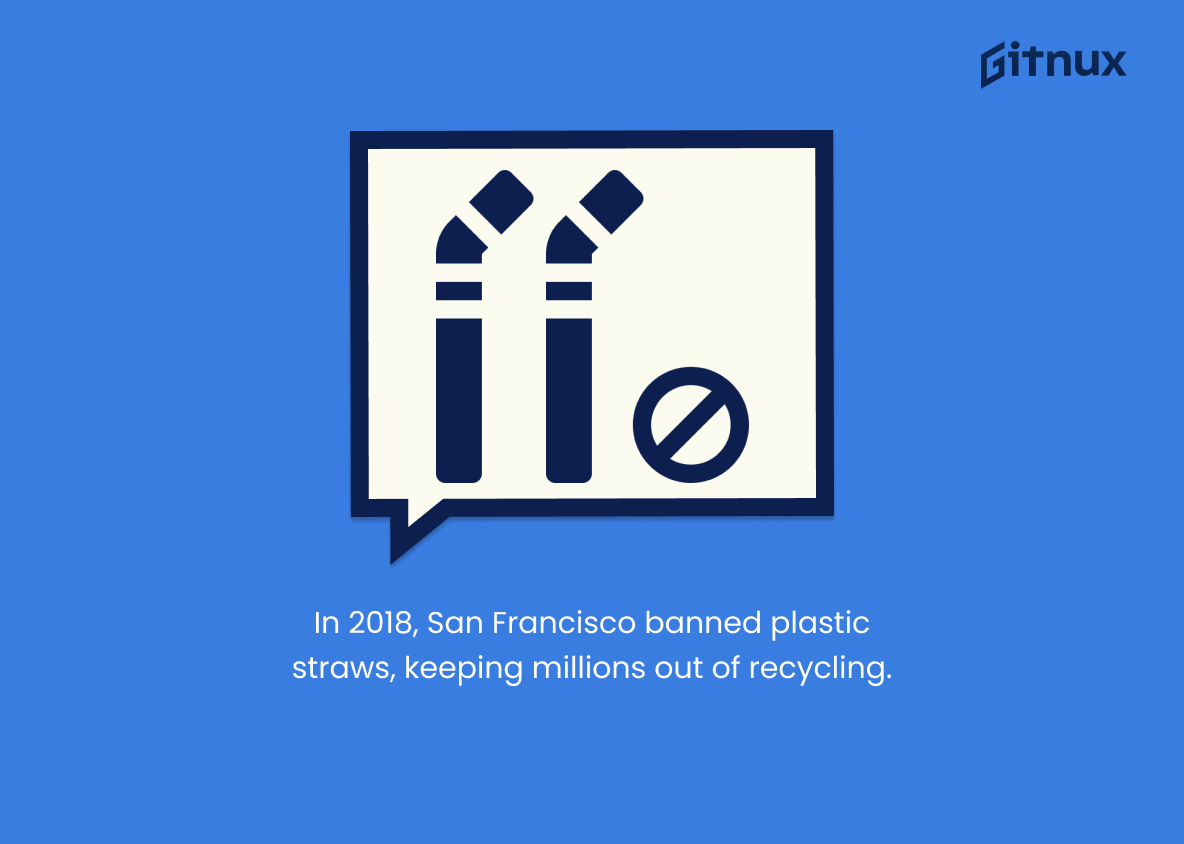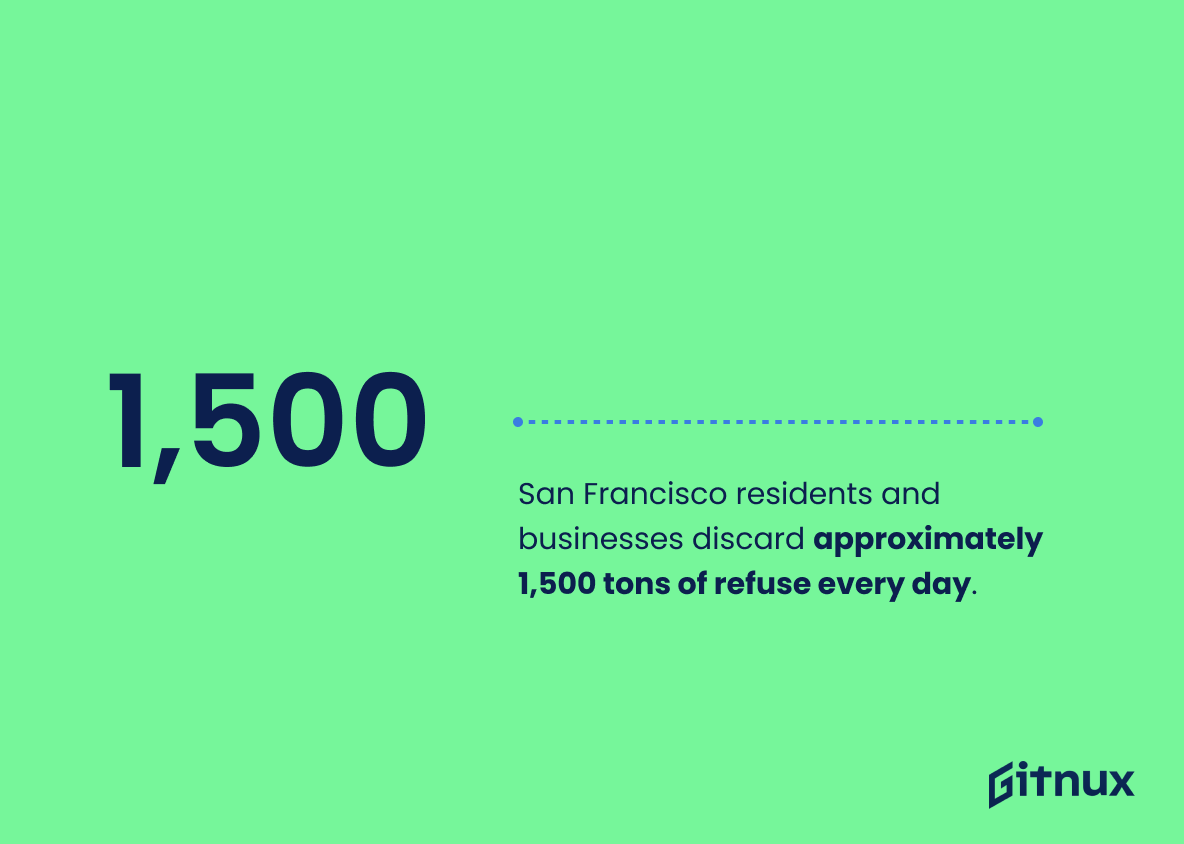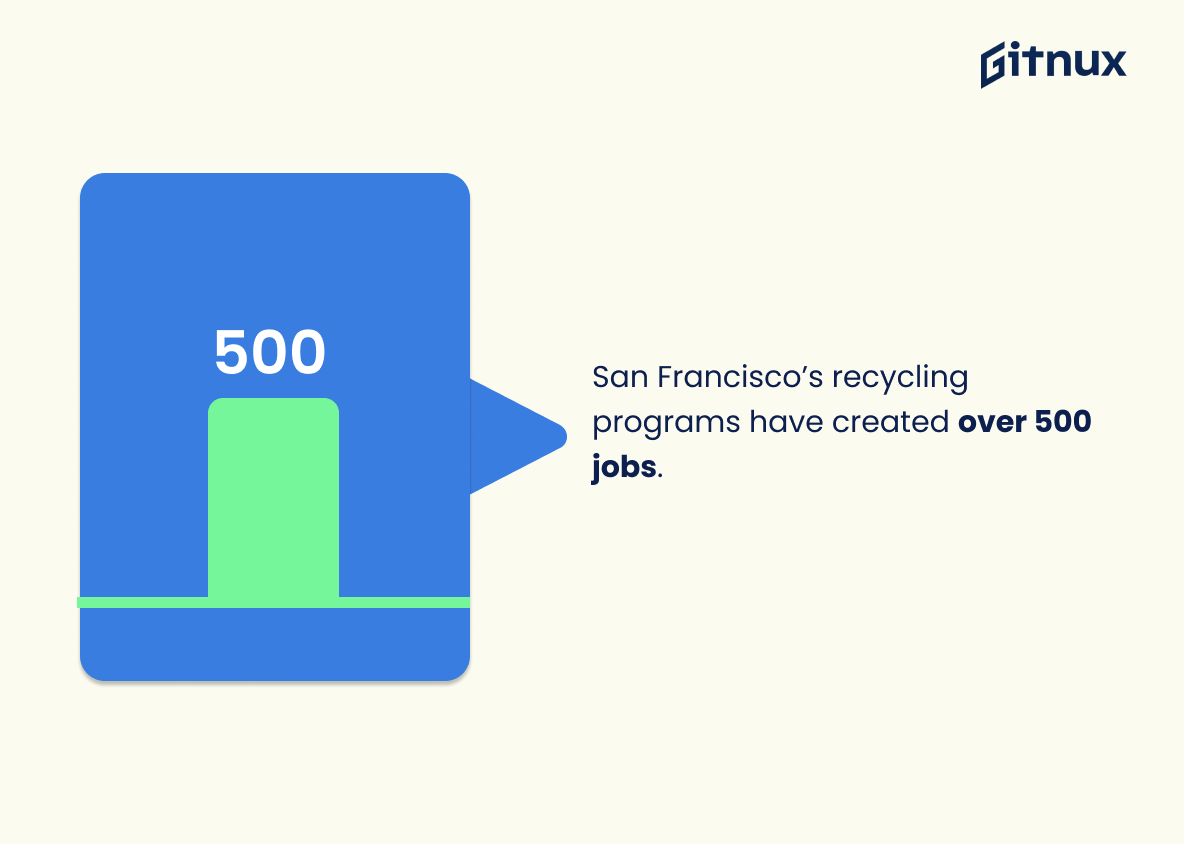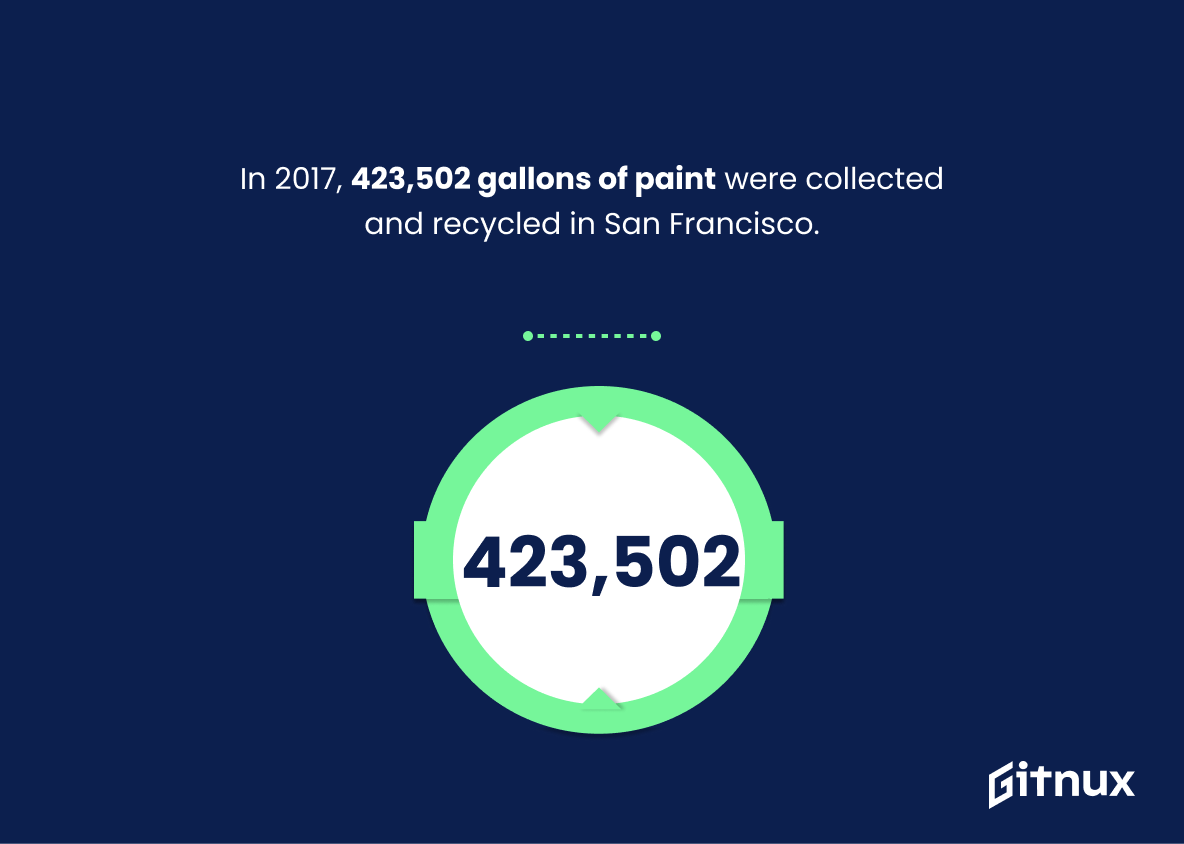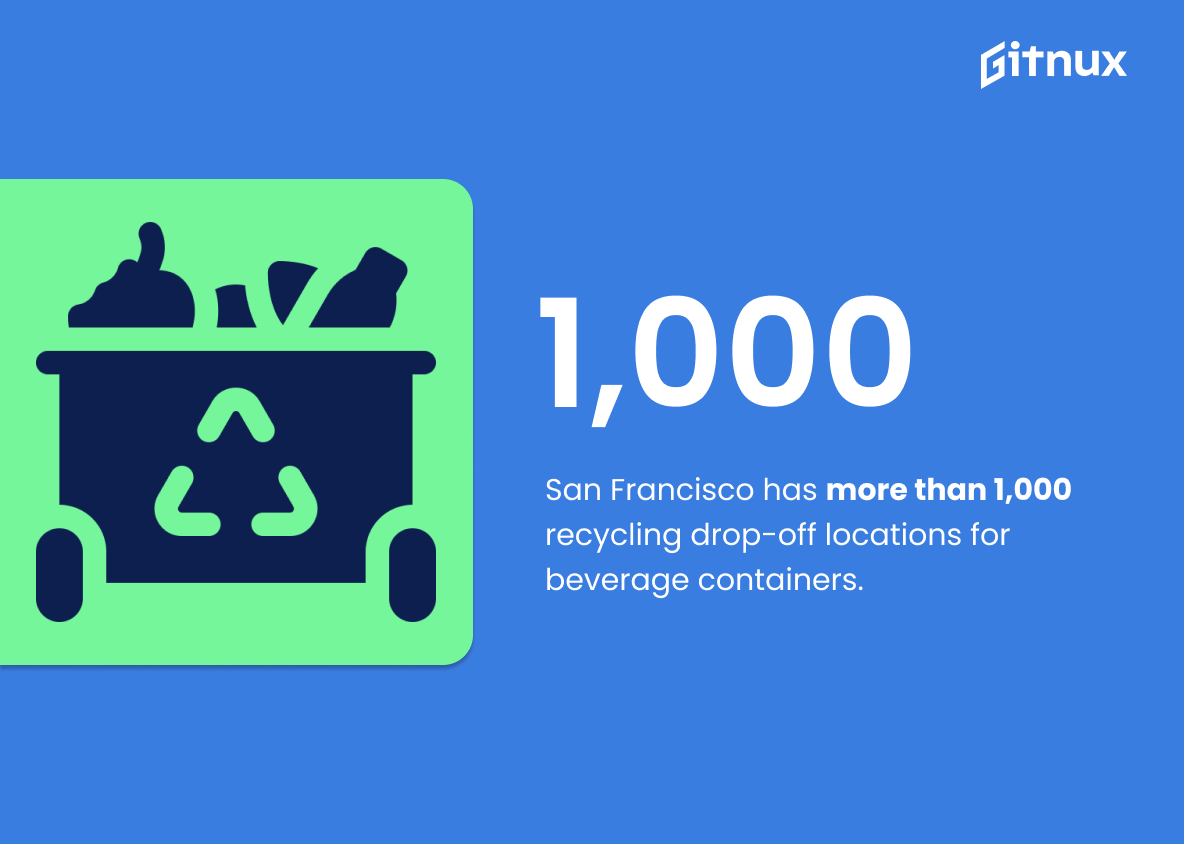San Francisco is a leader in recycling and waste diversion. In 2020, the city had an impressive 80% recycling rate, diverting 1.6 million tons of material from landfills each year. The average household curbside collection rate was 70%, while Recology collected over 625 tons of recyclable materials daily. San Francisco has also banned 25 different types of plastic and expanded polystyrene items for effective recycling, launched a citywide effort to eliminate plastic straws which has diverted millions of straws from the recycling stream, and 90% of all debris recovered from streets are diverted via composting or other means. Additionally, San Francisco residents discard approximately 1,500 tons per day with 500 jobs created by its various programs; 423 502 gallons paint were recycled in 2018; 2 200 tons textiles processed for reuse in 2019; more than one million electronic devices have been recovered since 2000; there are 1000+ beverage container drop-off locations across the city; 78 percent waste diversion achieved at SFUSD schools annually ; 250 000 single-use batteries collected yearly ; 20 000 mattresses recycled since 2010 ; 64 percent total disposed waste being either recyclable or compostable (2015); 3 000 ton organic matter composted every day ,and finally -1 5 million holiday lights recycled since 2013 .
San Francisco Recycling Statistics Overview
San Francisco bans 25 different types of plastic and expanded polystyrene items for effective recycling.
This statistic is a testament to San Francisco’s commitment to effective recycling, as it demonstrates the city’s dedication to reducing the amount of plastic and expanded polystyrene items that end up in landfills. By banning these items, San Francisco is taking a proactive step towards creating a more sustainable future.
In 2018, San Francisco launched a citywide effort to eliminate plastic straws, which has diverted millions of straws from the recycling stream.
This statistic is a testament to the success of San Francisco’s citywide effort to reduce plastic straw usage. It demonstrates the positive impact that the initiative has had on the recycling stream, with millions of straws being diverted from it. This is an important example of how small changes can have a big impact on the environment, and it serves as a reminder of the importance of recycling.
San Francisco residents and businesses discard approximately 1,500 tons of refuse every day.
This statistic is a stark reminder of the sheer amount of waste that is generated in San Francisco every day. It serves as a call to action for residents and businesses to take steps to reduce their waste and increase their recycling efforts. It also highlights the importance of having a comprehensive recycling program in place to ensure that as much of this waste as possible is diverted from landfills.
San Francisco’s recycling programs have created over 500 jobs.
This statistic is a testament to the positive impact San Francisco’s recycling programs have had on the local economy. Not only have these programs helped to reduce waste and conserve resources, but they have also created hundreds of jobs for the city’s residents. This is a powerful reminder of the potential for environmental initiatives to create meaningful economic opportunities.
In 2017, 423,502 gallons of paint were collected and recycled in San Francisco.
This statistic is a testament to the success of San Francisco’s recycling efforts. It shows that the city is taking the initiative to reduce waste and promote sustainability. By collecting and recycling such a large amount of paint, San Francisco is setting an example for other cities to follow. This statistic is a reminder that we all have a responsibility to do our part in protecting the environment.
San Francisco has more than 1,000 recycling drop-off locations for beverage containers.
This statistic is a testament to San Francisco’s commitment to sustainability and environmental protection. With over 1,000 recycling drop-off locations for beverage containers, the city is making it easier than ever for its citizens to do their part in reducing waste and preserving the planet.
The San Francisco Unified School District diverts 78% of its waste through recycling and composting.
This statistic is a testament to the success of San Francisco’s recycling efforts, demonstrating that the city is making great strides in diverting waste from landfills and reducing its environmental impact. It is a clear indication that the San Francisco Unified School District is taking the initiative to promote sustainability and protect the planet.
In 2015, 64% of San Francisco’s total waste disposed included recyclable or compostable material.
This statistic is a testament to the success of San Francisco’s recycling efforts. It shows that the city is making strides towards reducing its environmental impact and creating a more sustainable future. It also serves as a reminder that recycling is an important part of preserving our planet and that everyone should do their part to help.
Annually, San Francisco collects approximately 15,000 pounds of pharmaceuticals for safe disposal.
The fact that San Francisco collects 15,000 pounds of pharmaceuticals for safe disposal each year is a testament to the city’s commitment to protecting its citizens and environment. By disposing of these potentially hazardous materials in a safe and responsible manner, San Francisco is taking a proactive step towards safeguarding its citizens and preserving its natural resources.
Conclusion
San Francisco has made great strides in its recycling efforts, with a current recycling rate of around 80%, diverting 1.6 million tons of material from landfills each year, and an average household curbside collection rate of 70%. The city’s Recology program collects over 625 tons of recyclable materials daily and bans 25 different types of plastic items for effective recycling. San Francisco also launched a successful effort to eliminate plastic straws which has diverted millions from the waste stream. 90% debris recovered from streets is recycled or composted while residents discard approximately 1,500 tons every day. Over 500 jobs have been created through these programs as well as 423,502 gallons paint collected annually and 2200 tons textiles processed for reuse in 2019 alone. Electronic waste recovery since 2000 stands at more than one million tonnes while there are 1000+ drop-off locations for beverage containers across the city limits. 78% school district waste is diverted via composting/recycling along with 250k single use batteries per annum plus 15000 pounds pharmaceuticals disposed safely yearly too. Finally 3 thousand tonnes organic matter is composted on a daily basis by SF Recology whilst over 1 point 5m holiday lights have been recycled since 2013 – making it clear that San Francisco takes their commitment to sustainability seriously.
References
0. – https://www.www.sfenvironment.org
1. – https://www.www.sfusd.edu
2. – https://www.www.epa.gov
3. – https://www.www.sfexaminer.com
4. – https://www.www.paintcare.org
5. – https://www.www.calrecycle.ca.gov

